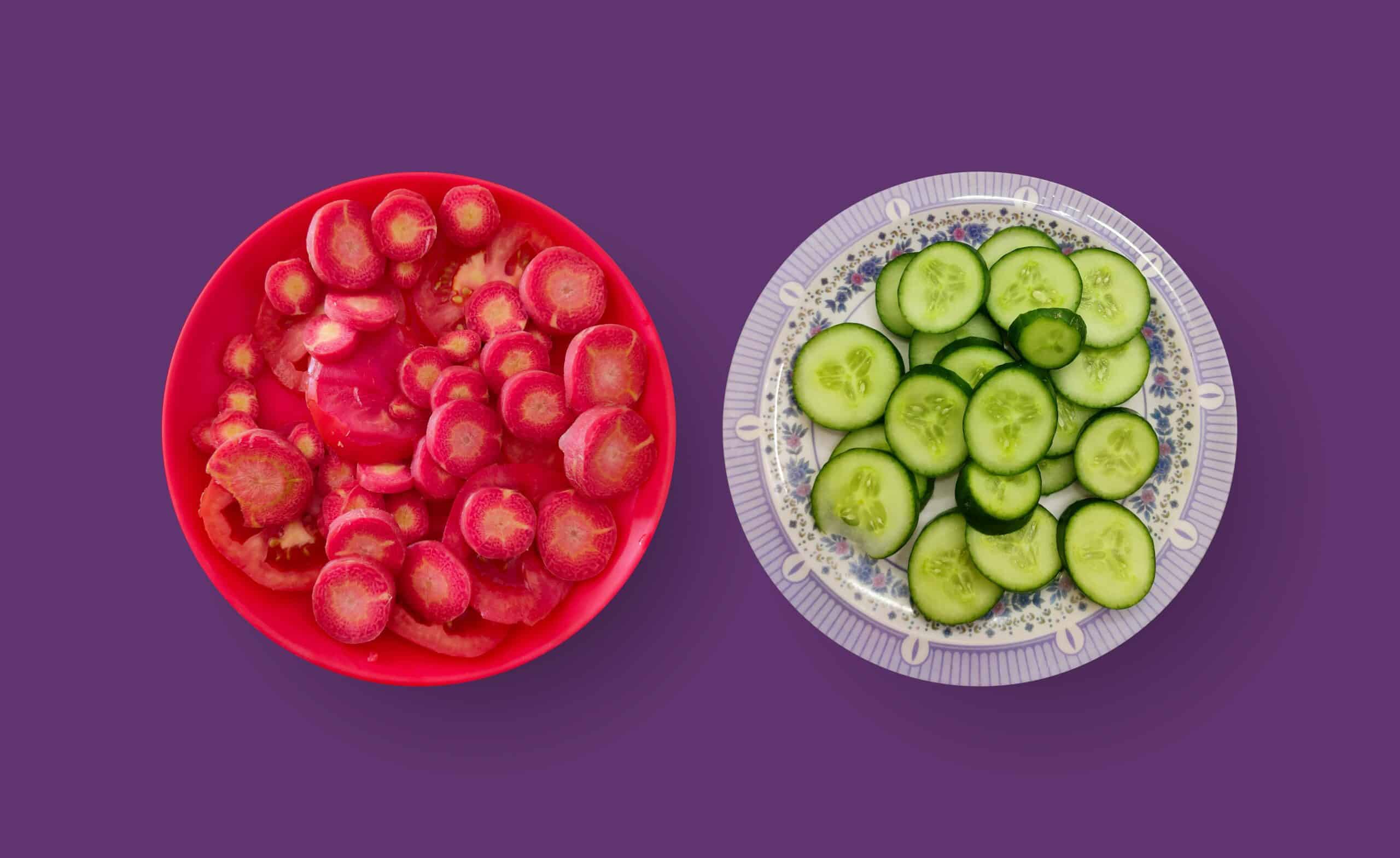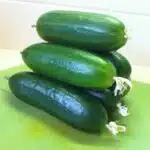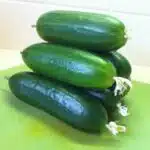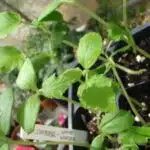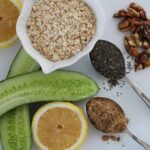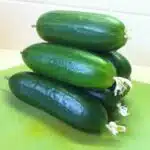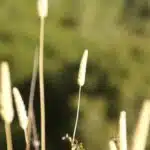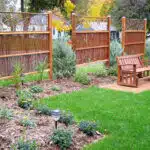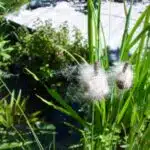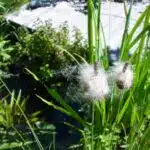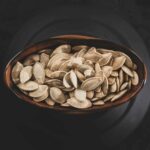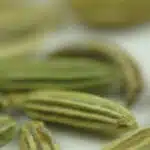Growing cucumbers from seed is a rewarding way to experience the full cycle of gardening, from planting to harvest. It’s a great way to ensure that you have the freshest and tastiest cucumbers available in your area. But before you can enjoy the fruits of your labor, there are some steps that need to be taken to make sure your cucumber plants get off to a good start. Just like any living thing, it needs proper care and attention in order for it to thrive. To illustrate how important these steps are, imagine coming home from work one day only to find that your garden is teeming with wild cucumbers because you neglected one small step when planting them!
Botanists and gardeners alike understand how crucial it is for cucumber plants grow healthy and strong. Planting cucumbers from seed can be somewhat tricky as there are many different variables involved such as soil temperature, moisture levels and sunlight exposure. However, with a little bit of knowledge and patience, growing cucumbers from seed can be an enjoyable activity that will leave you with a bountiful harvest come summertime.
In this article we will discuss all the necessary steps needed when growing cucumbers from seed so that you can experience the joy of harvesting fresh cucumbers right out of your own backyard! We will talk about everything from selecting the right variety of seeds to setting up your soil for maximum growth potential. With these tips in hand, you’ll be able to have delicious homegrown cucumbers year after year!
Choosing The Right Cucumber Variety
When selecting cucumbers for planting, it is important to consider the variety you are opting for. Different varieties of cucumber plants have different needs in terms of soil type and climate, so it’s important to choose one that’ll suit your location. For outdoor growing, ‘slicing’ cucumbers such as Salad Bush, Marketmore 76, and Burpless are great choices as they can tolerate a range of temperatures. If you’re growing indoors or in a greenhouse, then pickle varieties such as Boston Pickling or Spacemaster work better due to their high productivity levels.
No matter what variety you decide on, make sure the seeds you purchase are certified organic and non-GMO. This will ensure a healthier crop come harvest time and reduce any potential health concerns associated with GMO crops. Additionally, look for disease-resistant varieties which have been bred specifically to resist common cucumber diseases like powdery mildew or downy mildew.
Once you’ve chosen the right variety for your needs it’s time to move on to preparing the soil. Depending on where you live, this could involve making amendments such as adding compost or fertilizer to provide the necessary nutrition for your cucumber plants. It is also important to till the soil before planting in order to break up any clumps and improve drainage so that water can more easily reach the roots of your plants.
Preparing The Soil
When it comes to growing cucumbers, the soil preparation is second-to-none! Creating the perfect bed for your cucumbers is absolutely essential if you want to achieve maximum growth and yield. It’s almost like a magical process, as if you’re transforming an ordinary patch of land into a green paradise!
The soil should be loose and well-drained, so it’s best to mix in some organic matter such as compost or aged manure. This will help improve the texture of the soil, increase drainage, and add nutrients which will promote healthy cucumber plants. After mixing in the organic matter, use a garden fork to dig the area to a depth of eight inches (about 20 cm). Make sure to break up any large clumps and remove any stones or debris that may have been uncovered. This will ensure that your cucumber plants have plenty of space for their roots to spread out and access water and nutrients.
Finally, test your soil pH levels before planting. Cucumbers prefer slightly acidic soils with pH levels between 5.5 and 6.8; however, they can tolerate a wide range of pH levels so long as they are not too alkaline or too acidic. If necessary adjust the pH by adding either lime or sulfur according to your chosen soil test kit’s instructions. With these steps completed you are now ready for planting those seeds!
Planting The Seeds
Once the soil is prepared, it is time to plant the cucumber seeds. This step requires a few simple steps that will help ensure a successful harvest.
First, the seeds should be planted in small mounds or hills. Planting in hills helps to promote good drainage and allows for better air circulation around the plants. Additionally, it encourages deeper root growth which helps to produce healthier plants. Place two or three seeds per hill and be sure to cover them with at least a quarter of an inch of soil. The best time to plant cucumbers is when temperatures are consistently warm outside – usually after all danger of frost has passed.
After planting, it’s important to keep the soil moist. To do this, use either a light sprinkler or a hand-held watering can filled with lukewarm water, making sure not to disturb the seeds as you water them. As the seedlings begin to appear, gradually reduce the amount of water being used until they are established and can handle more frequent but lighter watering sessions.
The work put in up front will pay off! With proper care and maintenance, your cucumber plants will soon be producing delicious fruits for you and your family to enjoy!
Watering The Seeds
Having planted the cucumber seeds, it is time to move on to the next step in the process: watering. It is essential that you provide adequate hydration for your cucumber plants throughout their growth cycle. To ensure this, a drip irrigation system can be installed and used during the germination phase and beyond. Alternatively, you can water by hand using a hose or watering can. During germination and early seedling growth, it is important to keep the soil moist but not overly saturated as this can cause root rot and other problems.
Once the seedlings are established, you may need to adjust your watering routine based on weather conditions such as temperature, humidity and rainfall amounts. If there has been a lot of rain, make sure to check that the soil is not overly saturated before adding more water. Additionally, if temperatures are high during summer months, you may need to increase your regular watering frequency.
Cucumbers prefer well-drained soils with an even moisture content; when applied correctly, these conditions will promote healthy plant growth and optimal fruit production. Therefore, it is important to ensure that your cucumber plants are properly watered at all stages of their life cycle for successful harvests. With thoughtful care and attention, your cucumbers will be flourishing in no time! Now let’s move on to applying fertilizer for proper nutrition of these delicious vegetables.
Applying Fertilizer
Nursing a garden is like raising a child – you need to nurture it and make sure it has the right nourishment. When it comes to growing cucumbers from seed, applying fertilizer is an essential step. Fertilizing your seeds will help them grow healthy and strong, so here are some tips on how to do it:
• Apply the fertilizer at least twice during the growing season, with one application before the cucumber plants start blooming. • Choose a fertilizer that contains nitrogen, phosphorus, and potassium in balanced amounts. • Spread the fertilizer evenly around each plant, making sure to avoid contact with the stems or leaves. • Water deeply after fertilizing to help the nutrients reach down into the root zone of each plant.
It’s important for cucumber seedlings to get adequate nutrition as they develop in order for them to become healthy plants that can produce fruit. Applying fertilizer properly will give your cucumber plants the boost they need for robust growth. With this crucial step taken care of, you can move on to establishing healthy seedlings for your garden.
Establishing Healthy Seedlings
Have you ever wondered how to establish healthy seedlings after planting cucumber seeds? As a botany and gardening specialist, I know that there are specific steps to follow in order to ensure successful cucumber growth. Let’s explore the sixth step in this process – establishing healthy seedlings.
Providing your cucumbers with adequate warmth is essential for their growth. You should place the seedlings in a warm location that is exposed to sunlight and air circulation. If you can, set up a greenhouse or cold frame over the cucumber plants. This will give them the best environment for growing. Be sure to water your seedlings regularly but do not overwater them – this can lead to disease and fungal growth.
When it comes to soil, use a nutrient-rich soil that provides your cucumbers with enough nutrients for their growth. To achieve this, mix compost into the soil before planting your seeds. When it comes time to transplanting, be sure that they are planted at least six inches apart from each other as this will give them enough space to grow without competing for resources like light and water.
These steps should help you establish strong and healthy cucumber seedlings which will result in an abundant harvest of cucumbers! Now let’s move on to selecting a trellis system which helps maximize your garden space while keeping your cucumbers off the ground.
Selecting A Trellis System
Selecting a trellis system for growing cucumbers is an essential step in the gardening process. As with other vining plants, cucumber vines benefit from having something to climb on, as it helps keep them off of the ground and away from pests. When done correctly, trellising can help provide better air circulation and more even sunlight exposure.
For example, I recently created a simple trellis for my cucumber patch using a few strips of wood and some twine. I secured the wood strips in-ground at two ends of the bed and strung the twine between them to create a network that the vines could climb on. After only a few days, the young cucumber seedlings had already begun wrapping around the twine.
When choosing a trellis system, consider how tall you want it to be, as well as its shape and width – you’ll need to make sure that your trellis is sturdy enough to hold up all of those heavy cucumbers once they’re ready! Additionally, be sure to factor in where any nearby trees may be located so that you don’t inadvertently block out too much sunlight or shade your cucumbers too much. With careful planning and preparation, you’ll be able to create an ideal trellis system for your cucumber plants that will yield plenty of delicious fruits for years to come!
Now that we’ve discussed selecting a trellis system, let’s move on to pollination and fruitset — two processes which are absolutely essential for successful cucumber cultivation!
Pollination And Fruitset
Pollination and fruitset are key steps in the process of growing cucumbers from seed. When growing cucumber plants, it is important to understand the importance of pollination for proper fruit set. Pollination is the transfer of pollen from a male flower to a female flower, which helps the plant to produce fruit. To ensure proper pollination and fruitset, it is important to provide adequate space for bee activity around your cucumber plants. Bees help with the pollination process by transferring pollen from one flower to another. However, if there is not enough space for bees or if there are too many other flowering plants in the vicinity, then hand pollination may be necessary. This can be done by gently transferring pollen from a male flower to a female flower using a small brush or cotton swab.
The next step after successful pollination and fruitset is harvesting and storing your cucumbers. Proper harvesting techniques can ensure that your cucumbers stay fresh longer and maintain their quality over time. You should harvest your cucumbers when they reach their full size, but before they start turning yellowish-green in color. Once harvested, you should store them in a cool dry place away from direct sunlight and moisture. With proper care and maintenance, you can enjoy fresh cucumbers all season long!
Now that we’ve covered how to ensure proper pollination and fruitset as well as how to properly harvest your cucumbers, let’s turn our attention towards dealing with pests and diseases that may affect your cucumber plants during their growing season.
Dealing With Pests And Diseases
Many gardeners are faced with the challenge of dealing with pests and diseases when growing cucumbers from seed. While most cucumbers can withstand a few pests, a healthy crop requires vigilance and attention to prevent an infestation from occurring. As a botanist who specializes in gardening, I believe that understanding the most common pests and diseases is key to successfully growing cucumbers from seed.
Take for instance, aphids, tiny insects that feed on the sap of plants. They usually appear in early spring and can spread quickly if not addressed. To combat these pests, gardeners should inspect their plants regularly for signs of damage or infestation and use insecticides as needed. It’s also important to practice good sanitation by removing dead leaves and debris around the garden to help reduce harborage areas for aphids.
It’s equally important to be aware of disease threats such as powdery mildew which can cause yellow spots on the leaves of cucumbers. Prevention is key here too; ensure adequate spacing between your plants and water them at soil level rather than overhead so that the foliage isn’t wet for long periods of time. Good air circulation is also essential; pruning off any dead or diseased branches can help promote airflow throughout the plant.
By taking these steps, gardeners will be well equipped to protect their cucumber plants against pests and diseases while they are growing from seed. With some patience and attention, you’ll have a beautiful crop of cucumbers to enjoy in no time!
Growing Cucumbers In Containers
Growing cucumbers in containers is a great way to cultivate your own fresh produce! It’s an attractive, convenient and low-maintenance option for any gardener. To help you get started, here’s a handy guide on how to put together this amazing setup. Let’s sprout up some cucumbers!
Vibrant and lush, cucumber plants can flourish with just a few inches of soil and space. In order to create the perfect environment for your cuke-filled container garden, here are some key points to consider:
- Soil depth: Aim for about 6-8 inches of soil for the best results.
- Plant size: Cucumber plants can be aggressive climbers so make sure the container is big enough to accommodate that growth.
- Sunlight: Cucumbers require six hours of direct sunlight each day.
- Watering: Consistent watering is essential – aim for 1-2 times per week or as needed depending on the weather conditions.
Once you have all these pieces in place, it’s time to plant your seeds! Place them 1/2 inch deep in rows spaced 12 inches apart and cover lightly with soil. As they germinate and grown, remember to provide support such as trellises or cages so they don’t cascade over the sides of the pot! With adequate care and attention, your crop will be ready for harvesting before you know it.
Harvesting Cucumbers
Harvesting cucumbers is often the most thrilling part of gardening for many, as it marks the culmination of a successful growing season. Yet, ironically, it’s also the stage at which many gardeners make mistakes; harvesting too early or too late can lead to an unappetizing crop – or worse, none at all! As a botanist and gardening specialist, I’m here to tell you that harvesting cucumbers requires considerable knowledge and care.
First off, timing is key; picking them too soon will result in bitter-tasting fruits while waiting too long may cause them to become overly large and fibrous – not ideal for eating. To determine when cukes are ready for harvest, look for firmness and dark green coloration. If you’re unsure if they’re ripe enough yet, lightly press your finger against the stem end; if it yields slightly, then they’re ready!
Once harvested from the vine, cucumbers should be stored in a cool place like a refrigerator to prevent their flesh from softening prematurely. But don’t leave them in there too long either – especially if you plan on saving seeds – since overripe cucumbers will render them unusable. With this knowledge in hand, you’ll soon be enjoying fresh-picked cucumbers right out of your own garden!
Saving Seeds
As we look at the twining vines of cucumbers growing in our garden, it’s easy to forget that this bounty begins with a single seed. Saving those seeds is an important part of the gardening process, guaranteeing future success and preserving choice genetics for later generations.
The importance of saving cucumber seeds cannot be overstated. Not only does the process provide you with your own supply of heirloom-quality plants, but it also grants a higher level of control over their development and quality. Simply select the most robust specimens from your crop and save their seeds for next year’s garden!
The process itself is quite simple. As cucumbers ripen on the vine, allow them to reach full maturity before harvesting them for seed-saving purposes. Once removed from the plant, cut open each fruit and scoop out its contents into a bowl or bucket — this is where the true magic happens! Gently separate any remaining flesh from the seeds and rinse away any residue with cool water before spreading them out on a dry surface to finish drying completely before storing them in an airtight container. With these few steps, you’ll have saved enough cucumber seeds to keep your garden thriving for years to come!
Troubleshooting Common Problems
Troubleshooting is a vital part of successful cucumber growth. To ensure that your plants are healthy and productive, it is important to be aware of the common problems that can occur. With the right knowledge and attention, you will be able to identify any issues quickly and take the necessary steps to remedy them.
First and foremost, watch out for pests. Cucumbers are particularly susceptible to aphids, cucumber beetles, slugs and snails. These pests can spread diseases, feed on leaves and flowers, stunt growth or even kill your plants. Regularly inspect your plants for signs of infestation such as wilting or discolored foliage and take action if necessary.
Finally, it’s important to monitor water levels in the soil. Too much or too little water can have a detrimental effect on the health of your cucumbers; the soil should remain moist but not wet at all times. Consider using a moisture-testing meter or simply check by hand every few days to ensure that conditions are optimum for cucumber growth.
How Long Does It Take To Grow Cucumbers?
Ever wondered how long it takes to grow cucumbers? Growing cucumbers from seed is a great way to get delicious, nutritious vegetables in the summer months. But just how long does this process take? Here’s what you need to know about cultivating cucumber plants from seed.
The length of time it takes to grow cucumbers from seed depends on several factors. Firstly, the type of seed used will affect the growing time – some varieties require a longer period of germination than others. Secondly, the climate and soil conditions must be suitable for optimal growth; too much or too little sunlight, or incorrect pH levels in the soil can delay maturation. Finally, the method chosen for growing – indoor sowing versus outdoor planting – also has an effect on overall timing.
To give an idea of what to expect, here are three possible timelines for cultivating cucumbers from seed: • Indoor Sowing: If you start with an early-maturing variety and sow indoors in April or May, your cucumbers should be ready for harvesting after 8-10 weeks. • Outdoor Planting: For a late-maturing variety sown outdoors in May or June, you’ll generally have harvestable cucumbers in 12-15 weeks’ time. • Greenhouse Growing: Starting with a mid-maturing variety and planting in a greenhouse environment offers more flexibility; if done correctly, you should have harvestable fruit within 8-12 weeks.
By understanding the different factors that influence growing times for cucumbers and selecting appropriate varieties, climates and methods for cultivation, you can ensure that your plants will provide plenty of deliciousness when summer arrives!
Tips For Growing Cucumbers From Seed
Growing cucumbers from seed is a great way to get started gardening. It’s an easy-to-follow process that can be accomplished in a few weeks with the right tips and tricks. In this article, we’ll explore some key considerations for growing cucumbers from seed successfully.
When it comes to planting cucumber seeds, timing is important. It’s best to wait until all danger of frost has passed and the soil has warmed up before getting started. Once you’ve determined that it’s safe to plant your seeds, you’ll need to decide on a location as well as an appropriate soil type for your plants. Cucumbers prefer full sun and loose, well-drained soil that is rich in organic matter.
Cucumber plants are also very sensitive to water levels. They require consistent watering throughout their growth cycle, so make sure your garden receives regular irrigation or rainfall for the best results. Additionally, it’s important to regularly check for pests and diseases that may attack your cucumber plants and take steps to control them if necessary. Finally, don’t forget to keep the area around your plants free of weeds as this can compete with your cucumbers for nutrients and water.
By following these guidelines and providing adequate care throughout the season, you’ll be harvesting delicious homegrown cucumbers in no time! With just a little bit of effort and knowledge, you can enjoy fresh produce straight from the garden in just a few weeks’ time.
Frequently Asked Questions
What Is The Best Cucumber Variety To Grow From Seed?
Growing cucumbers from seed is like a journey of self-discovery. It offers a unique opportunity to explore different varieties and find the one that best suits your needs. As you embark on this adventure, it is important to know what variety of cucumber is best for you—this will help ensure that your garden is successful.
When selecting the right cucumber variety for your garden, there are some criteria to consider. First, think about the climate in which you live; this will determine whether you should choose a warm-weather or cool-weather variety. Additionally, consider how much space you have available; bush varieties take up less room than vining varieties. Finally, determine what type of cucumber you would like: pickling, slicing, or specialty types.
For those looking for an easy-to-grow cucumber with excellent flavor and disease resistance, try ‘Sweet Success’. This hybrid has good yields of dark-green fruits that reach up to 8 inches in length. It matures quickly and thrives in both warm and cool climates—perfect for beginners! ‘Sweet Success’ can also be grown as a bush variety if given enough room to vine, making it an ideal choice for small spaces.
No matter which variety you choose, growing cucumbers from seed can be an incredibly rewarding experience. With some careful planning and the right selection of seeds, your garden will be bursting with delicious produce before long!
How Deep Do Cucumber Seeds Need To Be Planted?
When it comes to planting cucumber seeds, the depth of planting is key for successful germination. How deep should you plant your cucumber seeds? Let’s take a look!
As a botanist and gardener, I can confidently say that cucumber seeds should be planted at a depth of one-half inch or less. This shallow depth ensures that the seeds are close enough to warmth and moisture in the soil to easily germinate. Additionally, this shallow depth allows light to reach the top of the seed, which is necessary for germination and sprouting.
It’s important to note that if you bury your cucumber seeds too deeply, they may not have access to enough warmth and moisture in the soil to germinate. As such, I recommend sticking with one-half inch or less when planting your cucumber seeds. Doing so will ensure healthy germination and an abundant harvest of delicious cucumbers!
To sum up, when it comes to properly planting cucumber seeds, you should plant no deeper than one-half inch in order to maximize germination rates and ensure healthy sprouts. With this technique, you’ll be well on your way to harvesting fresh cucumbers from your own garden!
Is It Necessary To Use A Trellis System For Growing Cucumbers?
Have you ever wondered if it’s necessary to use a trellis system for growing cucumbers? Well, the answer is that it depends on the variety of cucumber you’re planting, and your particular needs.
If you wish to save space in your garden, or if you have limited growing area, then a trellis system can be a great way to get more from less. Cucumbers naturally grow upwards towards the sun and will happily climb up trellis frames or other structures. This can save space, as well as create beautiful vertically growing vines with lots of tasty fruits.
However, there are also varieties of cucumbers that don’t need support and will naturally trail along the ground. These are often referred to as bush cucumbers, and they will spread out wide so they don’t need any additional support. Planting these varieties directly into the ground is all that’s required – no trellis needed!
TIP: If you decide to use a trellis system for your cucumbers, remember that they’ll need plenty of water and fertilizer throughout the season – especially when fruits begin to form – in order to produce large yields of healthy crops.
What Is The Best Way To Ensure Successful Pollination?
When growing cucumbers, successful pollination is a key factor for a healthy harvest. While it can be daunting to consider the intricacies of pollination in the garden, there are some straightforward steps that anyone can take to ensure that their cucumbers are adequately pollinated. The good news is that you don’t necessarily need a trellis system for your cucumber plants – although it can certainly help if you want to grow them vertically.
For successful pollination, one of the most important things to consider is the presence of bees or other small insects. These insects will feed on nectar and pollen from flowers and then transfer this pollen from one flower to another as they move around. Making sure that your garden provides ample food sources such as nectar-rich plants and flowers will encourage these small pollinators to visit your cucumber plants and help with their pollination needs. Additionally, hand-pollinating using a soft brush is also an option if you have very few bees or other pollinators in your area.
Finally, for the best chance of successful pollination it’s essential to keep your cucumber plants healthy and free from disease. Keeping weeds away from the base of the plants, providing adequate water and fertilizer, and removing any diseased leaves will all go a long way towards making sure that your cucumbers get everything they need for healthy growth and adequate pollination. With these tips in mind, you should be able to enjoy a bountiful harvest of delicious cucumbers!
What Are The Most Common Pests And Diseases For Cucumber Plants?
Cucumber plants can be susceptible to a variety of pests and diseases, making it important for gardeners to understand the most common issues they may face. In this article, we’ll explore some of the most common cucumber pests and diseases and explore how best to manage them in the garden.
It’s important to recognize that an ounce of prevention is worth a pound of cure when it comes to managing cucumber pests and diseases. A few simple steps can help protect cucumbers from many potential problems. Firstly, make sure that any new cucumber seedlings are planted in rich soil with plenty of organic matter and good drainage. Additionally, ensure that the plants get plenty of sunshine and water during their growing season. Finally, practice crop rotation so that cucumbers aren’t in the same spot for more than one year.
Most commonly, cucumbers are affected by aphids, powdery mildew, downy mildew, cucumber beetles, and bacterial wilt.
- Aphids are small insects which feed on plant sap using their piercing mouthparts; they can cause discoloration or wilting on leaves if left unchecked.
- Powdery mildew is a fungus identified by its white patches on leaves; it will reduce yields if not treated promptly with fungicides.
- Downy mildew is also caused by a fungus; it appears as yellow spots on leaves which eventually turn brownish or blackish in color.
- Cucumber beetles are small yellow or green beetles which feed on the foliage and fruit of cucumbers; they spread bacterial wilt disease as they move through fields.
- Bacterial wilt is caused by Erwinia tracheiphila bacteria infecting plants through beetle feeding; once infected, there is no cure and plants must be immediately removed from the area to prevent further spread of the disease among other plants nearby.
Gardeners should take proactive steps to protect their cucumber plants from these common pests and diseases: use insecticides for aphids and beetles at regular intervals throughout the season; use fungicides for powdery mildew and downy mildew before symptoms appear; practice crop rotation where possible; remove infected plants quickly before other nearby plants become affected; keep weeds under control as these can provide food sources for certain pests such as aphids or beetles; monitor fields closely looking for signs of infestation or infection early on so treatment can begin quickly if necessary.
With proper preventative measures in place, gardeners can be confident that their precious cucumber crops will remain healthy throughout their growing season!
Conclusion
Cucumbers are one of the most productive and rewarding crops to grow from seed. They require minimal effort to get started and, with the right care and attention, will provide you with a plentiful harvest. There are many varieties to choose from, each offering its own unique flavor and texture. Planting cucumber seeds deeply ensures that they establish themselves firmly in the soil before germinating. A trellis system is beneficial for keeping your cucumber plants upright and providing them with support as they grow. Adequate pollination is essential for successful fruit production; hand pollinating can help ensure this happens. Finally, being aware of common pests and diseases can help protect your plants from any unwanted visitors or illnesses.
In conclusion, growing cucumbers from seed is an enjoyable activity that rewards you with a tasty harvest! It’s not hard to get started; all you need is some patience and dedication. With a little bit of know-how, you’ll soon be able to reap the rewards of your efforts – healthy vines filled with delicious cucumbers. So why not get out there and give it a go?

